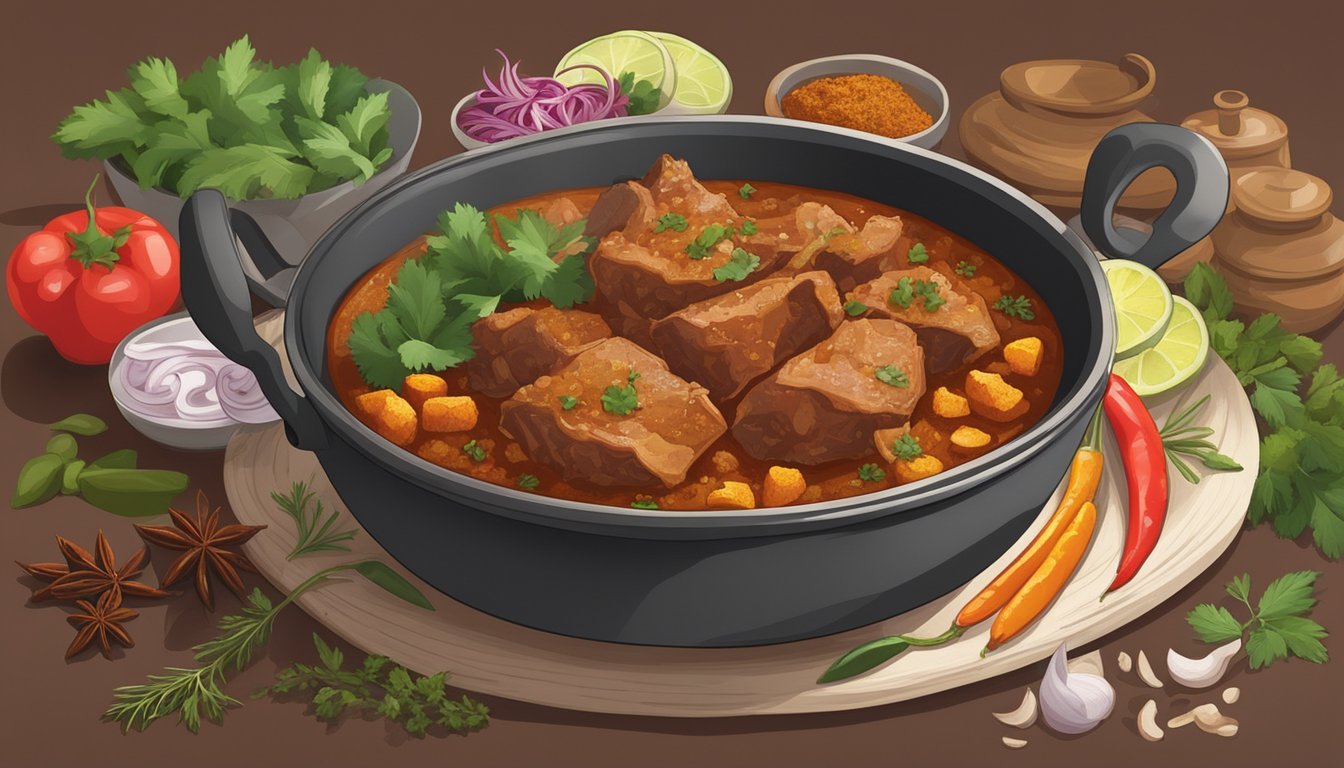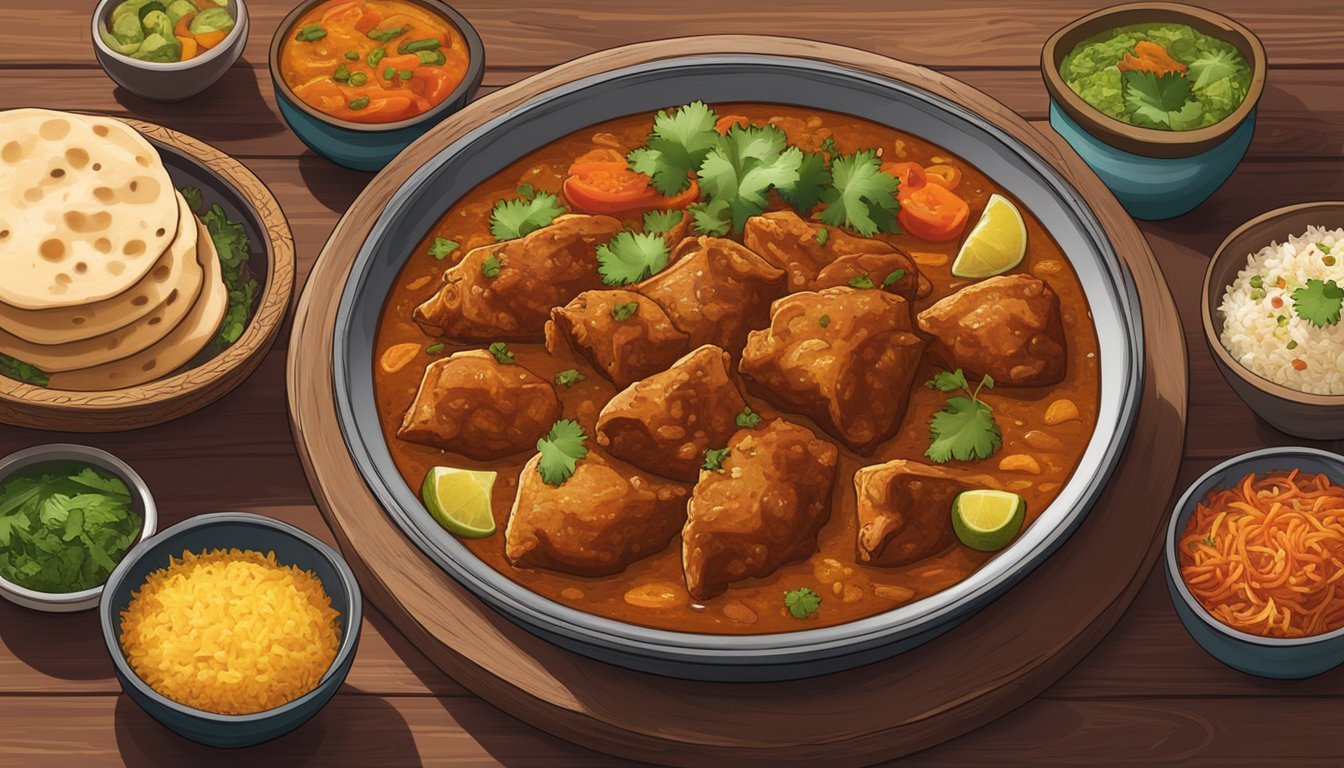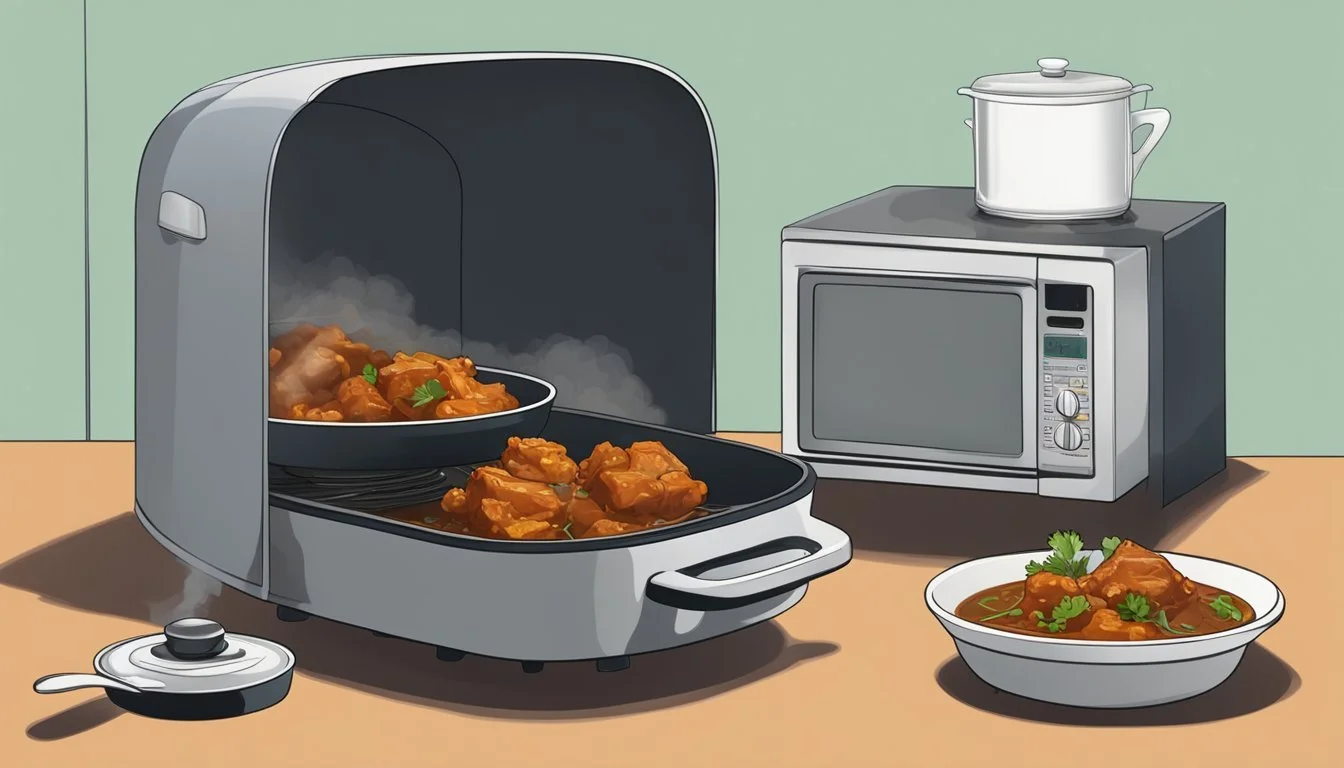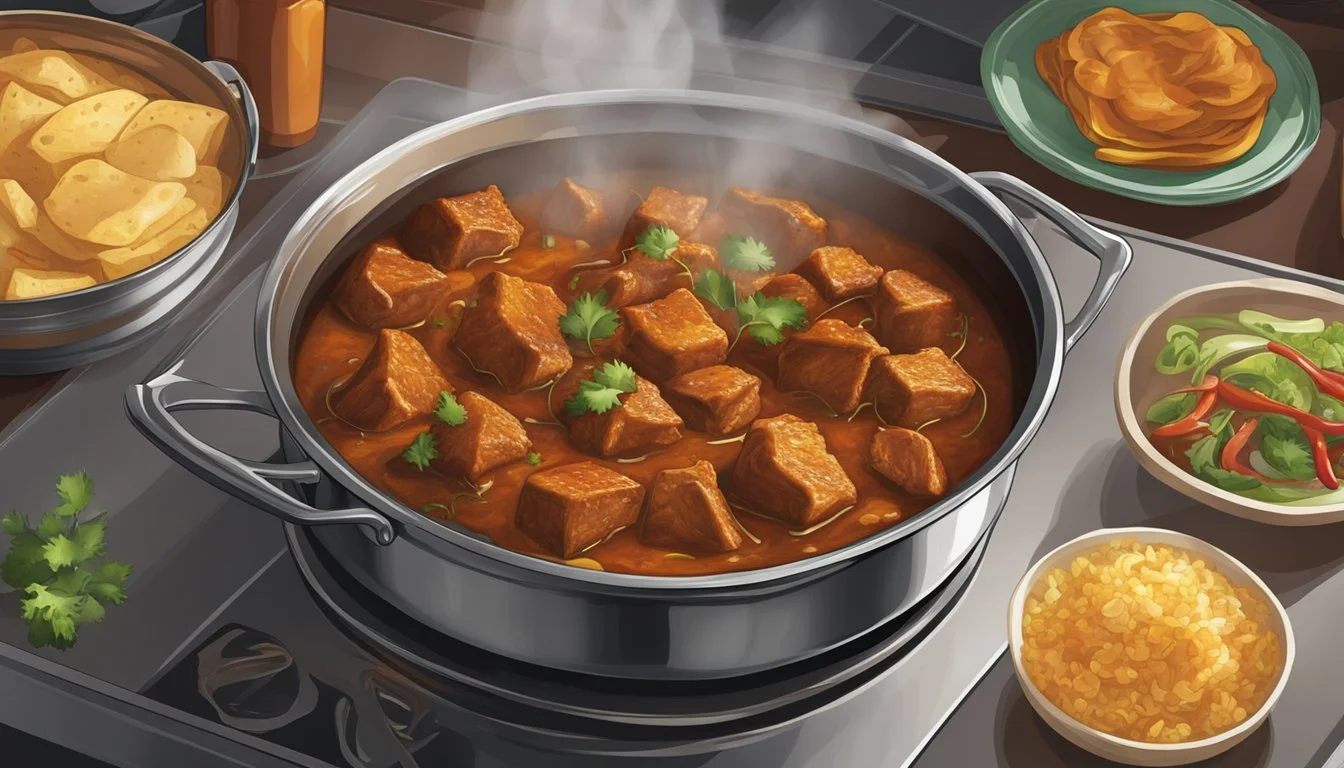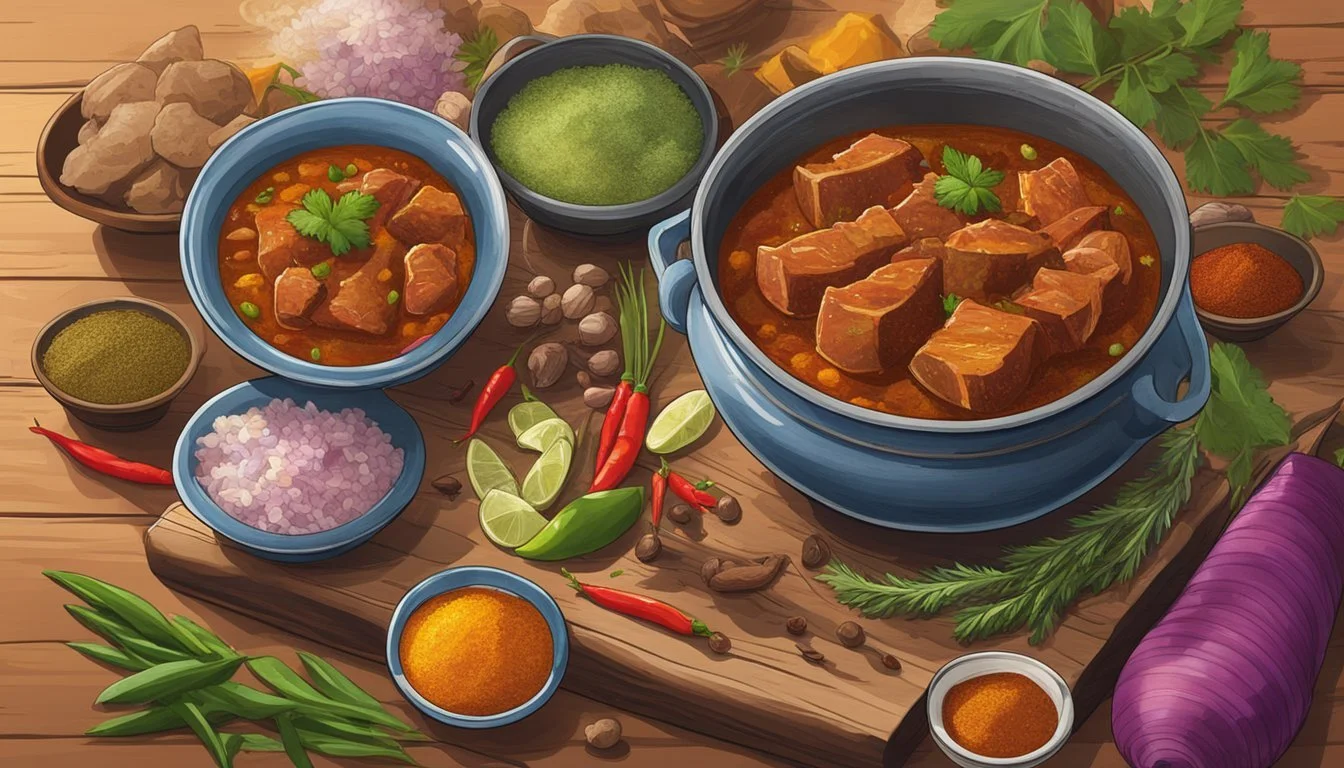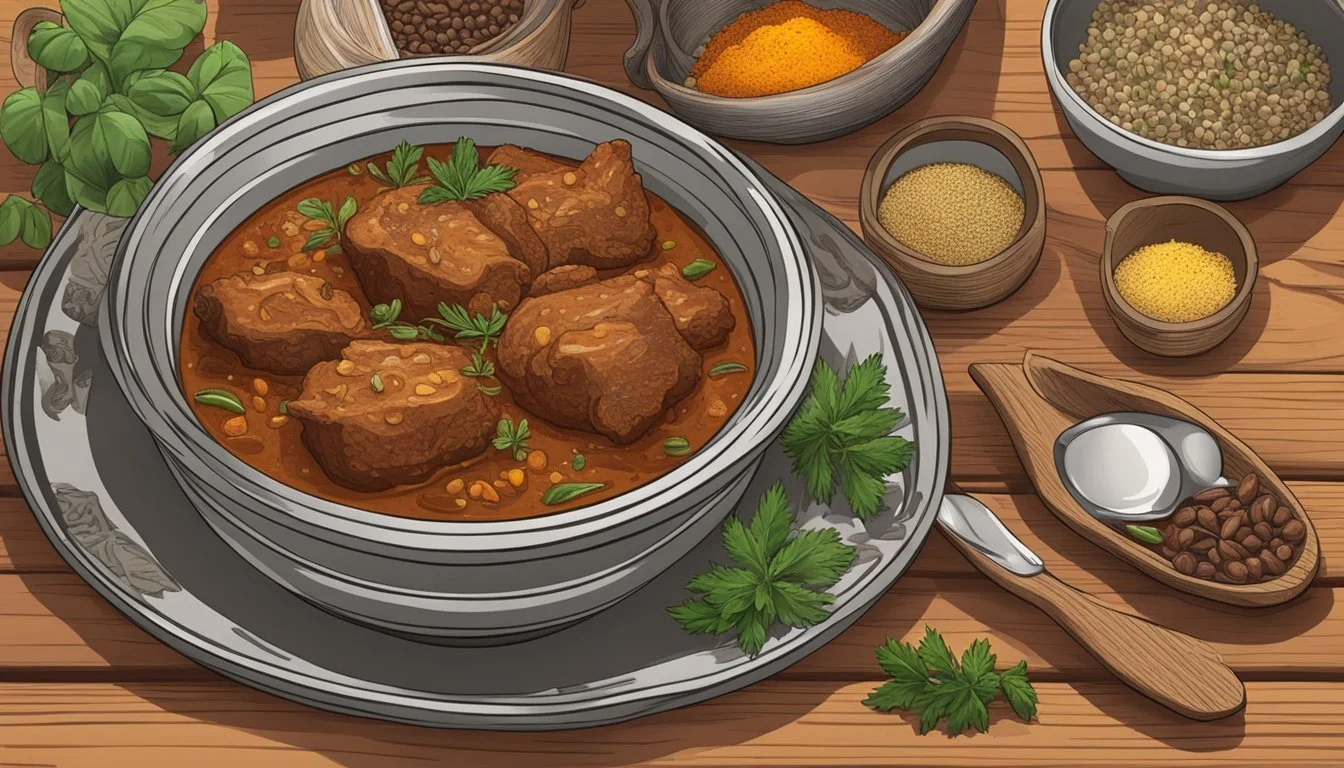Best Way to Reheat Pork Vindaloo
Ensuring Flavorful Warmth Without Compromise
Pork Vindaloo is a celebrated dish in Indian cuisine, known for its bold spicy and tangy flavors. Originating from the Goa region of India, this dish has Portuguese influences and is a favorite for its potent combination of vinegar, chili, and a blend of aromatic spices. The hearty stew-like concoction features succulent pieces of pork marinated in a fiery vindaloo paste and then cooked until tender. It's a complex and intensely flavored dish that can be a centerpiece at any meal.
To maintain the authentic flavors of Pork Vindaloo when reheating, attention to detail is crucial. The balance of spices and the tang of the vinegar are the soul of this dish, and preserving that character is paramount to enjoying an authentic Vindaloo experience post-preparation. Proper reheating techniques not only restore the dish to a pleasing temperature but also enrich and intensify its flavors.
Recreating the nuanced taste of Pork Vindaloo after it cools down challenges many home cooks. Whether the dish has been refrigerated overnight or set aside for a few hours, retaining the bright, vivid flavors during reheating often requires a careful approach. Heeding to a meticulously chosen method would further enhance the intricate spices and ensure the pork remains tender and flavorful, offering a taste as close as possible to the freshly made specialty.
Understanding Pork Vindaloo
Pork Vindaloo is a vibrant dish with rich cultural roots and a complex flavor profile. This section dives into the origins of the dish, the essential ingredients that contribute to its taste, and the distinctive flavors that it offers.
Origins and Cultural Significance
Pork Vindaloo originates from Goa, a coastal state in India which was once a Portuguese colony. The dish is a fusion of Portuguese cooking practices and Indian ingredients. The term 'Vindaloo' is derived from the Portuguese dish "Carne de Vinha d'Alhos," which translates to meat marinated in wine-vinegar and garlic. Over time, this dish has been adapted into Goan cuisine by incorporating traditional Indian spices, embodying the culinary amalgamation of Portuguese and Indian cultures.
Key Ingredients
The key components of a traditional Pork Vindaloo include:
Pork: The primary protein.
Garlic and Vinegar: Integral to the marinade, imparting the characteristic tanginess.
Spices: Such as cumin, turmeric, cloves, black peppercorns, and especially Kashmiri chili for heat and color. Often, cinnamon is also included for its sweet, woody aroma.
Indian spices blend with the vinegar to form the basis of the vindaloo paste in which the pork is marinated.
The marinade is crucial, as it not only tenderizes the pork but also infuses it with the flavors that define the dish.
Flavor Profile
Pork Vindaloo is celebrated for its bold, spicy, hot, sour, and tangy flavor profile. The dish is characterized by:
Heat: From black peppercorns and Kashmiri chili.
Sourness: Through the use of vinegar, which also adds a hint of tanginess.
Complexity of flavors: From the blend of Indian spices, such as cumin, turmeric, and cloves.
Pork Vindaloo's taste is a careful balance that retains the essence of Goan cuisine while honoring its Portuguese roots.
Preparation Essentials
For an exceptional Pork Vindaloo, selecting the right cut of meat, perfecting the marination, and preparing a robust spice blend are essential steps. These foundational preparations will ensure the dish retains its distinct tangy and spicy character when reheated.
Ideal Cut of Meat
The ideal cut of meat for Pork Vindaloo is pork shoulder. This cut is preferred because it is rich in flavor and has enough fat to remain tender during slow cooking. The pork shoulder should be cut into uniform pieces to ensure even marination and cooking.
Marination Process
To marinate the pork, a Vindaloo paste is used, which typically includes a mix of garlic, ginger, and a myriad of spices. The marination process allows the pork to absorb the flavors deeply, which is crucial for a flavorful Vindaloo. It is recommended to marinate the pork for at least a few hours, or preferably overnight, in the refrigerator.
Marination Ingredients:
Garlic
Ginger
Turmeric powder
Cumin seeds
Other Vindaloo specific spices
Spice Blend Creation
Creating the ideal spice blend for Vindaloo involves the use of a spice grinder to blend several whole spices to a fine consistency. Essential spices for a Vindaloo include cumin seeds, black pepper, cinnamon stick, and Kashmiri chili, which provides a vibrant color and a moderate heat level without overpowering the dish.
Spice Blend Composition:
Cumin seeds: for a warm, earthy note
Black pepper: for heat
Cinnamon stick: for a sweet and woody flavor
Kashmiri chili: for color and mild spiciness
These spices are blended to form a masala, constituting the base of the Vindaloo paste, to which garlic, ginger, and other ingredients such as vinegar are added to create a harmonious and complex flavor profile.
Reheating Techniques
Proper reheating methods can maintain the spicy and tangy integrity of pork vindaloo leftovers. One must consider the cook time and the tools used, such as a pot, skillet, or dutch oven, to reheat effectively without compromising flavor.
Stovetop Method
Reheating pork vindaloo on the stovetop is ideal for preserving its flavors and moistness. He recommends transferring the vindaloo into a skillet or a pot. One should add a small amount of water to prevent the sauce from drying out. They should then cover it with a lid and reheat on a low-medium setting, stirring occasionally, to ensure even heating. The dish is properly reheated when it reaches an internal temperature of 165°F.
Oven Reheating
Oven reheating is a gentle way to warm up leftover pork vindaloo. One should preheat the oven to 325°F and place the vindaloo in an oven-safe dish, such as a dutch oven. It is advisable to add a splash of water before covering it with foil to retain moisture. They should reheat the dish for 20-30 minutes, depending on the quantity, until it reaches the safe internal temperature.
Microwave Considerations
Using a microwave offers the quickest method for reheating pork vindaloo but requires careful attention to avoid uneven heating. One should place the vindaloo in a microwave-safe dish, ideally with a sprinkle of water or oil to keep it moist. Covering the dish with a microwave-safe lid or vented plastic wrap helps trap steam. They should heat in short intervals, stirring in between, until the vindaloo is evenly heated throughout.
Retaining Flavor and Moisture
When reheating pork vindaloo, the challenge lies in preserving the dish's inherent spicy and tangy flavors while also maintaining its moisture.
Dealing with Dryness
To combat dryness in pork vindaloo, one should gently reheat the dish, ideally in a skillet over low heat. Adding a small amount of water can aid in creating steam, which helps to keep the meat succulent. Furthermore, a tight-fitting lid is crucial to trap the moisture, ensuring that the pork remains tender.
Method: Skillet over low heat
Add: A splash of water
Tool: Tight-fitting lid
Enhancing Spiciness
The spiciness in pork vindaloo comes from a variety of spices, including chili peppers. To enhance these flavors during reheating, gentle stirring is recommended so the spicy elements distribute evenly. A small addition of fresh ground spices can also rejuvenate the heat without overwhelming the dish.
Stir: Gently to redistribute spices
Add: A pinch of fresh ground spices
Maintaining Tanginess
Tanginess in pork vindaloo often comes from vinegar or other acidic ingredients. When reheating, care should be taken not to dissipate these volatile elements. Introducing a bit of fresh vinegar just before serving can lift the dish, restoring the tangy profile without compromising the intended flavor balance.
Preserve: Avoid high heat to retain acidic components
Boost: A teaspoon of fresh vinegar before serving
Accompaniments and Side Dishes
Selecting the right accompaniments is crucial for enhancing the dynamic flavors of Pork Vindaloo. The side dishes should complement its spicy and tangy taste without overshadowing the main dish.
Best Types of Rice
Basmati Rice: Basmati rice is a prime choice for Pork Vindaloo due to its aromatic profile and light, fluffy texture which absorbs the curry's flavors well.
White Rice: A simple bowl of white rice can also serve as a neutral backdrop, allowing the bold spices of the Vindaloo to shine through.
Traditional Indian Breads
Naan: A buttery naan is perfect for scooping up the Vindaloo, with its soft interior and slightly crisp exterior it provides a satisfying textural contrast.
Other Breads: Different types of Indian bread, such as roti or paratha, are also well-suited to pair with the dish, especially for those who prefer a whole wheat option.
Vegetable Pairings
Cilantro: Garnishing with fresh cilantro can add a burst of color and a herby freshness to the meal.
Onions and Potatoes: Sautéed onions and roasted potatoes make substantial side dishes that can balance out the intense heat of the Vindaloo.
Vegetables with Paprika and Coriander: Including vegetables like bell peppers sprinkled with paprika or coriander adds another layer of flavor and complements the spicy profile of the curry.
Storing Leftover Pork Vindaloo
Proper storage of leftover Pork Vindaloo is crucial to maintain its flavor and quality. The refrigerator can keep the dish safe for consumption for a few days, while the freezer extends its shelf life significantly.
Refrigeration Guidelines
To refrigerate leftover Pork Vindaloo, one should transfer the dish to an airtight container within two hours of cooking to prevent bacterial growth. Refrigeration will keep Pork Vindaloo safe to eat for up to three to four days. When storing, divide the vindaloo into single servings to facilitate easy reheating without the need to thaw the entire batch.
Total Time in Fridge: Up to 3-4 days
Container: Airtight
Temperature: Below 40°F (4°C)
Freezer Storage Tips
For long-term storage of leftover Pork Vindaloo, the freezer is an effective option. Before freezing, ensure that the vindaloo has cooled completely to prevent condensation and ice crystal formation. Portion the vindaloo into servings and use freezer-safe containers or bags, labeled with the date of storage.
Total Time in Freezer: Up to 2-3 months
Container: Freezer-safe, labeled with date
Thawing: Overnight in the fridge or using the defrost setting on the microwave
By following these refrigeration and freezer storage tips, one can ensure that the Pork Vindaloo retains its spicy and tangy flavor when reheated, while also keeping food safety in mind.
Health and Nutrition
When considering the health and nutrition aspects of reheating pork vindaloo, it is crucial to pay attention to its caloric content and dietary considerations. Each serving contributes to daily calorie intake and aligns with certain diet preferences.
Caloric Content
Pork vindaloo is a flavorful dish with a mixture of spices and rich ingredients. A standard serving of pork vindaloo can contain approximately 300 to 400 calories, depending on the recipe and portion size. Accurate calorie counts will vary based on how the dish is prepared and any additional ingredients included.
Dietary Considerations
Pork vindaloo fits within several dietary plans but should be consumed in moderation by those monitoring their caloric intake. It is:
High in Protein: Pork is a good source of lean protein.
Spicy: The spices can stimulate metabolism but may not be suitable for those with sensitive stomachs.
Contains Fats: Some recipes use oil or ghee, contributing to the fat content.
Individuals adhering to a low-carbohydrate diet may find pork vindaloo suitable, provided the sauce does not contain added sugars. However, it may not align with low-fat or low-calorie diets. Always check the specific recipe for exact nutrition information and consider portion sizes when reheating to maintain control over calorie consumption.
Recipe Variations
Pork Vindaloo is versatile and allows for numerous variations to cater to different dietary preferences and spice tolerances. Here are some ways to customize the dish while maintaining its signature flavors.
Alternative Proteins
Chicken Vindaloo: Chicken, particularly thighs, can be substituted for pork to create a flavorful Chicken Vindaloo.
Beef Vindaloo: For a heartier version, beef is an excellent choice; it holds the spices well and tenderizes beautifully when slow-cooked.
Lamb Vindaloo: Lamb is another traditional option; its robust flavor pairs well with the rich and tangy sauce of Vindaloo.
Vegan and Vegetarian Options
Chickpeas: A protein-packed alternative, chickpeas absorb the Vindaloo sauce well and add a pleasing texture.
Tofu: Firm tofu can be used as a meat substitute; it should be well-pressed and marinated for optimal flavor infusion.
Mixed Vegetables: A mix of hearty vegetables like potatoes, carrots, and bell peppers can replace meat for a nutritious and satisfying meal.
Adjusting Spice Levels
Spicy: To increase heat, one can add more red chilies or introduce hotter varieties like habaneros or ghost peppers.
Mild: For less spice, reduce the quantity of chilies used or deseed them to temper the heat.
Balanced: For a balanced flavor, mix both hot and mild chilies to achieve a moderate level of spice that complements the tanginess of the dish.
Presentation and Serving Tips
When reheating Pork Vindaloo to serve, one should focus on maintaining the dish’s flavorful essence and presenting it appealingly. The course should be served hot, plated with attention to color and texture to enhance the dining experience.
Starting with the serving aspect, portion the Pork Vindaloo onto warmed plates. This ensures the dish maintains its temperature, allowing diners to savor every spicy and tangy bite. A proper reheating process, whether on the stovetop or in the oven, preserves moisture and flavor, making each serving as enjoyable as when freshly cooked.
Presentation matters as much as taste. Aesthetically, Pork Vindaloo can be enrichened with a bed of fluffy rice, preferably Basmati or Jasmine which contrasts the vibrant sauce of the Vindaloo. The rice not only acts as a visual break but also balances the flavors.
For garnish, a sprinkle of fresh, finely chopped cilantro adds a bright, herbal note that complements the robust flavors of the dish. The green of the cilantro offers a fresh pop of color, imbuing the plate with vibrancy.
Garnishing Tips:
Cilantro: A light garnish on top, never overpowering the dish.
Sliced Chilies: For those who appreciate an extra kick.
Lime Wedges: A side offering to adjust tanginess as preferred.
In summary, one should carefully reheat and serve Pork Vindaloo to enhance the eating experience. Accompaniments and garnishes serve to complement the Vindaloo, balancing out the meal and ensuring a treat for both the palate and the eyes.
Frequently Asked Questions
What is the best way to reheat pork vindaloo to maintain its flavors?
To preserve the spicy and tangy flavor profile of pork vindaloo, gently reheat it on the stove over low to medium heat. Stir occasionally and add a splash of water if needed to prevent it from sticking to the pan or drying out.
How can one prevent the spices in pork vindaloo from becoming overpowering when reheating?
One should reheat pork vindaloo slowly and avoid using high heat, as this can intensify the spices too much. Reheating slowly helps maintain the balance of flavors.
Does vinegar affect the reheating process of pork vindaloo?
Yes, the vinegar in pork vindaloo can break down over time, affecting the dish’s tanginess. To combat this, they may opt to add a small amount of vinegar while reheating to enhance the tangy flavor.
What is the ideal cooking time when reheating pork vindaloo?
Ideally, pork vindaloo should be reheated until it reaches a safe internal temperature of 165°F. This usually takes about 10-15 minutes over low to medium heat on the stove.
Are there any special preparation steps to consider when reheating pork vindaloo?
Before reheating, they should let the pork vindaloo come to room temperature for about 20-30 minutes. This allows for more even reheating and prevents the dish from being heated too long, which can affect its texture and flavor.
Can pork vindaloo be reheated in a microwave?
While stove top is preferred, they may reheat pork vindaloo in a microwave using a microwave-safe container and covering it loosely. It's best to reheat in short intervals, stirring in between to ensure even heating without overly concentrating the spices.
Conclusion
When reheating pork vindaloo, the goal is to preserve the complex flavors and tenderness of the meat. Employing the right technique ensures that the dish's distinctive spicy and tangy profile remains intact.
Stovetop Method: Gently heat the vindaloo in a pot over medium-low heat, stirring occasionally. Add a splash of water or broth if necessary to prevent drying out.
Oven Method: Preheat the oven to 325°F. Place the vindaloo in an oven-safe dish, cover tightly with foil, and heat until warm throughout.
Microwave Method: Heat in a microwave-safe container, covered, on medium power. Stir periodically to distribute heat evenly.
Important Tips:
Always cover the vindaloo while reheating to retain moisture.
For best results, reheat only the portion needed to avoid multiple reheating sessions.
Ensure the vindaloo reaches an internal temperature of 165°F for food safety.
Following these suggestions helps maintain the integrity of this Indian delicacy. Whether following the original recipe or reviving leftovers, one can enjoy pork vindaloo as it was meant to be savored.

